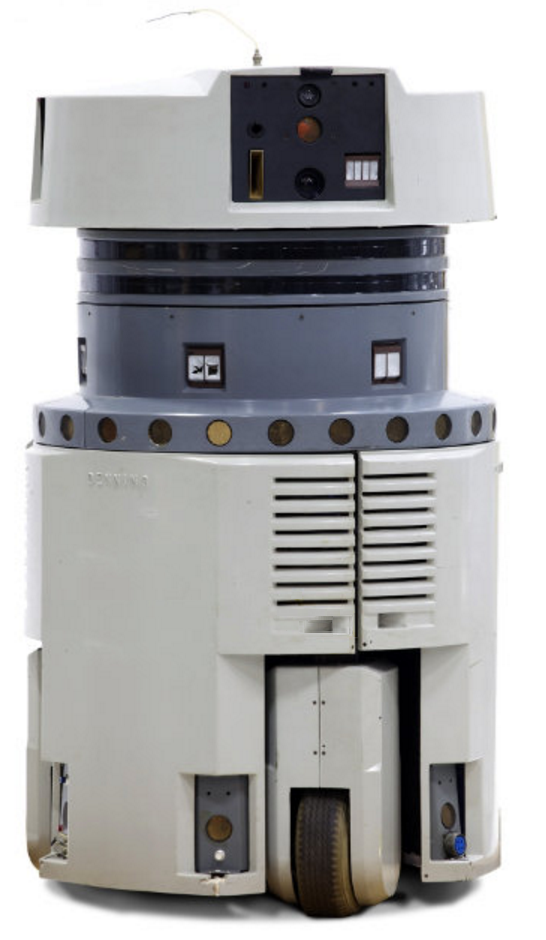 |
|
Height = 124 cm (48.75") Diameter = 72 cm (28")
[not including its 19 cm (7.5") antenna]
|
|
|
RoboCop, the
inspiration, not the movie
HISTORY
Denning Mobile Robotics, Inc. of Woburn, Massachusetts (nearby Boston's
legendary Route 128) was the "the first company to offer ready-made autonomous
robots". This Denning Mobile Robot ("DMR") was introduced in 1985.
The first market was as a robotic guard replacement for warehouse and office security.
Other hoped for markets included inventory retrieval, office valet, nursing home and
hospital assistant, and dangerous assignments. The DMR used AI goal seeking technology
to devise the best route and then navigate around obstacles, including moving people
and changing environments, and find its own way to a recharging station and plug itself
in (analogous to today's driverless cars' challenges).
The commercial markets didn't materialize as the cost was prohibitive, being
well in excess $60,000, so the marketing focus shifted to promoting the DMR as a mobile
robotic research platform.
Sadly, in 1997, Denning was laid to rest nearby Carnegie Mellon
University in Pittsburgh, Pennsylvania where it was conceived.
RELIABILITY IMPROVEMENT PROJECT
Initially, the Mean Time Between Failures ("MTBF") was around 10
hours. After an intensive reliability improvement project, that MTBF improved to around
1,000 hours. The success of this project, can be attributed to: a) comprehensive task
tracking that was shared widely, b) immersion in dynamic measurement practices that ran
tests day AND night, c) a delegation philosophy that recognized each task manager as
CEO of his or her task, except for unplanned commitments, d) piecewise MTBF target of
2,000 hours, e) tradeoffs had to be documented to inform later work, and e) especially,
the exceptionally talented and enthusiastic team this exciting and demanding
challenge attracted4
The task tracking system shown to the right drove the weekly review meeting
process. Noteworthy, weekly status reports were replaced by marking a template
with codes and, rarely, exception notes. Tasks were designed to have roughly two
milestones per month so every task could post a milestone victory every month AND
no problem would go unreported for more than a week. The reporting template is on right.
|
|
|